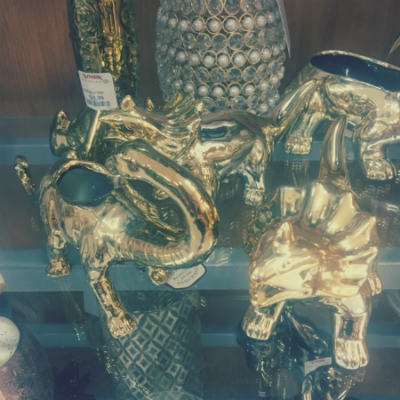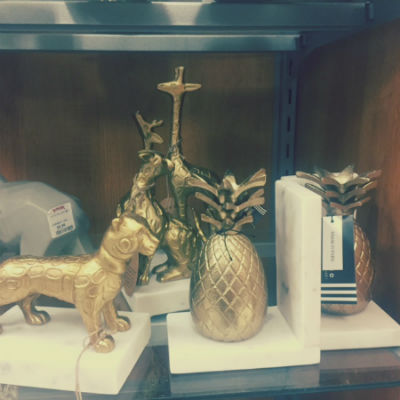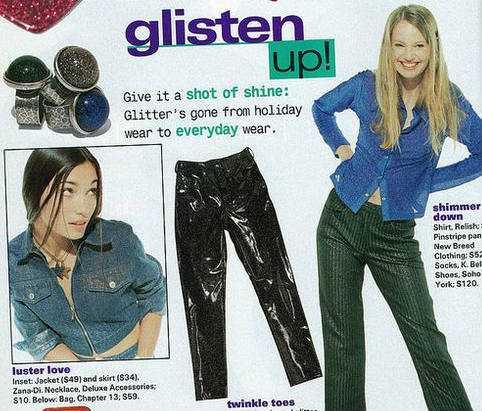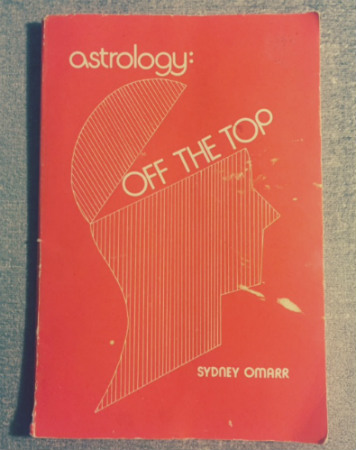Posted on June 29, 2018
Birthday Boy 22nd Anniversary Edition
Since today is my birthday, you can take this opportunity to purchase a limited edition cassette of a crappy lo-fi EP I released in 1996, (which has been re-released by a label in Eugene, Oregon without my knowledge or permission.) I guess I’ve finally reached the age as an artist where young people take up an interest my shitty and obscure early recordings, so I’m honored and grateful for that. I may not be worthy of such recognition, but no one can ever say I didn’t pay my dues.
Birthday Boy was originally released in October of 1996. It was recorded on a Fostex XR-3 when I lived in my first apartment, at Desert Star Apartments in Phoenix, AZ. The complex was a mildly seedy dump back then, but now resembles a dangerous, post apocalyptic wasteland. The apartment only came with basic cable, of which the only cable channels included were The Family Channel, C-Span and the E! Channel. That’s it, nothing else. Living on my own and knowing very few people in the city, I spent most of my spare time watching the E! Channel, which at the time featured reruns of Melrose Place, WKRP in Cincinnati, One Day at a Time, and Alice. Regular tv also aired reruns of Charlie’s Angels and The Rockford Files during this period. I mention this because the era has become an enduring inspiration for me and a formative part of my identity.
Since I was living a fairly isolated lifestyle and wasn’t socially active, I frequently wrote songs about the lives of characters on the shows I was watching. For example, the second track on Birthday Boy is titled Right Back Where I Started, but the lyrics actually chronicle the romantic and often diabolic misadventures of the character Michael on Melrose Place. There are dozens of similar recordings which once existed, such as my spoken word cover of the theme song of WKRP in Cincinnati (which was re-worded and adapted to be about Arizona.) Sadly, I have moved nearly 30 times since then, and these other recordings have all been lost over the years…having been last seen around the year 2004 or so.)
The show Alice was also a show which I found oddly relatable as an 18 year old young man. The plot of Alice was centered around a woman who was driving to Los Angeles to start a new life and pursue a singing career, but her car broke down in Phoenix. She ends up staying in suburban Phoenix after she’s forced to take a job at a diner there to make ends meet, and the place starts to grow on her.
Anyway, that is the story of Birthday Boy. The cassette re-release can be purchased HERE. Special thanks to Captain Crook Records for rediscovering this uncharted “fool’s gold” record. The limited edition cassette re-release is almost sold out, but Birthday Boy (along with many other recordings) can still be purchased through iTunes as well.
Click here to purchase on iTunes
An obscure 90’s oddity, Birthday Boy’s aesthetic resembles something of a “Lo-Fi Leisure Suit Larry.” The song, Right Back Where I Started chronicles the love life of the character Michael from the show, Melrose Place. Originally released on cassette in 1996, this is one the most unusual recordings from a highly experimental era of indie alternative music.
Posted on May 31, 2018
Skytrain to Nowhere
Available in Paperback here
and eBook (pdf) here
Skytrain to Nowhere is an imagination driven and esoteric volume of free-form poetry. The book documents the author’s experiences, thoughts and observations while riding the skytrain at Phoenix Sky Harbor International Airport over the period of several weeks. Since the skytrain is only designed to transport travelers between various terminals and parking facilities at the airport, someone spending nearly 50 hours riding it purely for recreation and artistic inspirational purposes is highly unusual (to put it mildly.) Aside from occasional quirky anecdotes about various passengers, the poems mostly deal with themes of motion, the passage of time, and nostalgia. The author grapples with these issues from a retro-futurist perspective. Skytrain to Nowhere celebrates the realization that our vitality hinges on our ability to always keep moving, while recognizing we are unwilling or unable to leave some things behind on the journey.
Purchase Skytrain to Nowhere on Amazon.
Posted on May 22, 2018
Off the Top
“Read old books” they say. Well, I went ahead, dug into my closet looking for some light reading and found an astrology paperback I picked up about 7 years ago from Half Price Books. It’s from 1975 and titled Off the Top. The author was a famed astrologer named Sydney Omarr (note that despite the Arabic sounding name, he was actually born Sidney Kimmelman and was Jewish.) Anyway, as you might imagine, I’m not a huge believer in astrology but have always been intrigued by it and favored the aesthetic over other religions. I do in fact believe that forces in the cosmos probably do affect us to some degree but in ways we have not yet been able to pinpoint with specificity and perhaps never will. I went through a phase several years ago when I was looking for 1970’s-80s astrology books mostly for the illustrations and laid back writing style they often featured. I even had a sterling silver, crab pendant necklace in honor of my own zodiac sign, Cancer. Having worn the necklace for about a year, I eventually lost it and have been too lazy to buy another one since.
When reading Off the Top, I sometimes felt reminded of that scene from Leaving Las Vegas when Nicholas Cage is looking at the sign for “The Whole Year Inn” but instead sees it as saying “The Whole You’re In.” I mention this because the book is mostly Omarr’s casual thoughts and ruminations about astrological signs, taken “off the top” of his head (or the opening paragraphs of his syndicated newspaper forecasts.) Off the Top might just as well be a euphemism for Out the Ass, depending on your point of view.
Amusingly, even in a light hearted book like this it only takes Omarr one paragraph into the book before he brings up the nazis and the holocaust, within the context of the role of astrologers played in WWII. However, this quickly leads into one of the more interesting parts of the book, which is a lengthy introduction featuring a fast-paced hodgepodge of favorable quotes and anecdotes about astrology relating to various public figures and personalities. Often the endorsements seem a little out of context but are interesting tidbits nonetheless. Among the first are a couple of quotations from Carl Jung:
“We are born at a given moment, in a given place, and like vintage years of wine, we have the qualities of the year and of the season in which we are born.”
and
“Astrology represents the sum of all the psychological knowledge of antiquity”
The intro also has some rather ridiculous paragraphs from Omarr himself, noteworthy only for their chutzpah:
Becoming proficient in astrology demands knowledge of astronomy, history, mathematics,literature and psychology. Not all astrologers live up to the highest standards. Sadly, neither do all attorneys, physicians and educators. The key in this Space Age is to set aside preconceived notions, academic prejudice and aim toward progress. If astrology, among other subjects leads the way, so be it.
It also includes zillions of “factoids” which seem kind of far-fetched but which I don’t have the time or energy to research to verify their accuracy. Example:
Outbreaks of murder appear to be triggered by the moon tugging on “biological tides” within the human body, according to Dr. Arnold L. Lieber of the University of Miami medical school
You get the idea. The introductory portion actually goes on for over 30 pages, nearly 1/3 of the entire book.
Moving on to the actual signs, Omarr dedicates several pages to each one. They offer comprehensive and detailed overviews, written in a very entertaining, no-nonsense and matter of fact tone. Some statements are unintentionally, hilariously accurate, such as:
The United States is a Cancer nation and has been known to feed the world.
Being a Cancer myself, I got a kick out of how much time Omarr devotes to talking about how Cancer is a great cook and loves being in the kitchen. My own idea of “cooking” is to throw a brick of tofu in the microwave, add some cheese and grape seed oil vegenaise to it and presto! My home cooked meals for most of my 20’s to mid 30’s consisted almost exclusively of microwave popcorn and cheap wine. The late Sydney Omarr must have gotten the last laugh though when I realized he had me pegged after all:
The classical Cancer native has a tendency to repeat facts and deliver monologues. Members of this zodiacal sign savor childhood memories, even bitter ones.
I recommend this book, even though I’ve been somewhat critical of it and don’t take much of it seriously. It is written in a very entertaining style, and believe it or not I learned a few things I did not know (too many to mention actually.) It also does contain a few of the kind of 70s paperback illustrations and fonts which were the reason I purchased it, so I can’t really complain.
Posted on March 14, 2018
Brassless Balls

Several years ago I went through a phase of collecting brass (and sometimes bronze) statues from antique and thrift stores. Through working for a company that distributed electronic components, I learned that the price of copper had gone up quite a bit (brass contains both copper and zinc.) This was often a factor in the price increases of certain products. “Tell him we can’t honor that price anymore. The price of copper has gone up,” would be a typical explanation you’d have to give to a customer.
Anyways, occasionally I would have the inclination to go to contemporary outlet and department stores hoping to find similar statues and artifacts, with the hope that I could score something neat that might increase in value in the future. Well, I was sorely disappointed to discover that nearly everything was absolute junk. Worse than that though, was that these companies would try to pass off something that was meant to look like one of those nice brass statues or bookends, yet it would be merely come cheap metal or ceramic that was slathered with gold paint. To add insult to injury, they would sell it for the same price (even adjusted for inflation) as what one could get a quality brass knick knack back when you could still get them 20 years ago. The savings in manufacturing a cheaper, lower quality product is barely even passed on to the consumer. My guess is that if there are people still making legit brass and bronze statues, they are being sold as luxury items at exponentially higher prices. This might all seem trivial, but it’s a microcosm for what corporations do:
1. Manufacture something as cheaply as they can and provide the lowest quality product that people will accept.
2. Claim to be offering the product at a better price, even though they’re pocketing the bulk of the money they’re by saving using cheaper materials and labor, and the consumer is still paying almost the same as before.
3. Offer something as a luxury item that used to be a standard, inexpensive item or add-on. A good example of this is when hotels started tacking on “resort fees” for things that used to be free like using the pool or making a local phone call from your room.
4. Copy each other, so that all companies basically have the same policies, processes and products, leaving you with no choice (you decide to take your business to another department store and then another, only to find that none of them carry genuine brass statues, and the gold painted ceramic triceratops is your only option.)
Libertarians or republicans might read this and say, “Well that’s just the free market, bro.” Perhaps, but let’s not pretend that the free market innovation inherently results in better quality products being made. They are only “better” in the sense of being able to make a more efficient profit for someone, somewhere. Just as beautiful and intelligent creatures don’t always survive the evolution and natural selection process without a little help from their friends, often times, the unchecked free market often leads to one being surrounded by cheap junk.

Brandon Adamson is the author of Skytrain to Nowhere




